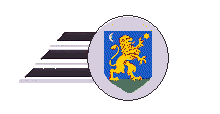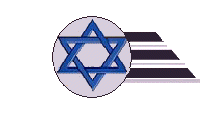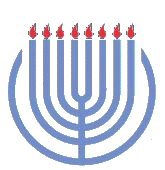Beregszász Jewish Community Yesterday
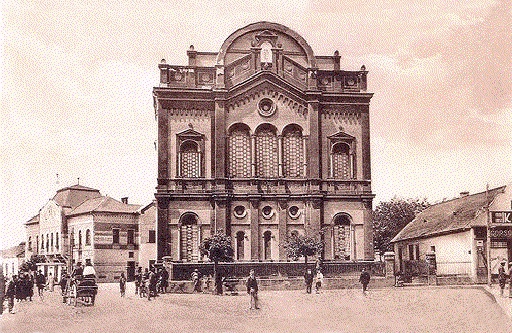
Beregszász Grand Synagogue
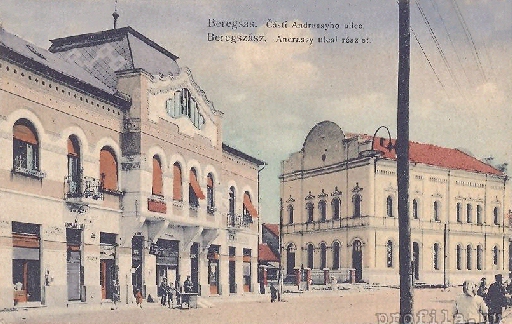
left, Beregszász Mikvah (Religious Bath) and right, the rear of the synagogue
In 1768, a Jewish settlement was established and four Jewish families were recorded and by 1830, the Jewish population grew to 200.
Until the beginning of the 1800s, Jews were not allowed to live in Beregszász, but in the early 1800s, Jews started emigrating to Beregszász mainly, from Galicia and Poland.
An organized community, with its own rabbi, was formed by 5598 (1838). One of the first rabbis of Beregszász, was Rabbi Yitzchok ROCHLITZ, a pious and tremendous scholar, who was a descendant of the Maharal of Prague. His first rabbinical position was as Rabbi of Tas, where he served 19 years and then he was appointed as the first Rabbi of Beregszász, in 5598 (1838), a position he held for 21 years until his passing on 10 June 1859 (8 Sivan 5619).
By 1877, the population of Beregszász was 6,929 made up of Hungarians, Rusyns, Germans and Jews which comprised Roman Catholic (1,516), Greek Catholic (824), Eastern Orthodox Catholic (7), Agnostic (25), Reformed (2,762) and Jewish (1,795 - 26% of the total).
In 1861, Rabbi Avruham Yehuda HaKohen SCHWARCZ, author of Kol Aryeh, began to officiate in Beregszász. Rabbi SCHWARCZ was born in Mád, Hungary, in 5584 (1824). At the age 14, he was admitted to the yeshiva (religious school) of the Chasam Sofer, in Pressburg (Bratislava), where he became one of the top students. After a year and a half, the Chasam Sofer passed away and Rabbi SCHWARCZ went to the yeshiva of Rabbi Lev, Rabbi of Verbou, where he studied for a couple of years. When he left the yeshiva, the Rabbi of Verbou wrote a rabbinic ordination for him. Instead of writing he was a citizen of Mád, Hungary, he wrote he was the Rabbi of Mád. When Rabbi SCHWARCZ saw what the rabbi had written, he showed him the error, but Rabbi Lev smiled and told him, "if he wrote it that way, let it stay that way."
Rabbi SCHWARCZ returned to Mád and, after a short while, he married Fayga, the daughter of Rabbi Moshe Leib GINTZLER of Sator-Ujhely. He lived for a couple of years there and then returned to Mád where he opened a yeshiva and was its head until 1861, when he became the Rabbi of Beregszász.
In Beregszász, Rabbi SCHWARCZ also founded a yeshiva and was the dean for 50 students, where some of the rabbis of the next generation studied. Deserving of notable mention are his son, Rabbi Naftuli SCHWARCZ of Mád, his grandson Rabbi Shlomo Zalmen EHRENREICH of Shomlo, Rabbi Yehuda GRUNFELD of Semihy, Rabbi Elya KATZ of Roslovitz and Rabbi Shaul ROSENBERG of Ratzfert.
In 1878, a couple of controversies broke out between Rabbi SCHWARCZ and the leaders of the community, one was regarding the appointment of a certain chazan (cantor) which he felt was inappropriate. In the end, the true background of the chazan became known; he had left his wife in a distant town and she eventually tracked him down in Beregszász, which led to his arrest by the authorities. He eventually left Beregszász in shame. The second controversy was in regard to appointing a dayan (religious judge) in Beregszász, which Rabbi SCHWARCZ was against. After this, Rabbi SCHWARCZ remained as rabbi for another two years, until he left in 1881 to serve as rabbi in his hometown, Mád, Hungary and the prophecy of Rabbi Lev of Verbou became true.
However, Rabbi SCHWARCZ continued to be known as the Rabbi of Beregszász and Mád.
Beregszász remained without an official rabbi for a couple of years, until 1884, when Rabbi Shlomo SCHREIBER (SOFER) was appointed as Rabbi of Beregszász. He was the youngest son of the Ksav Sofer and grandson of the Chasam Sofer, from Presburg (Bratislava), born 28 Tamuz 5613 (3 August 1853). He married Toba Briendel, the daughter of Avruhom Iser PHILIP in 5635 (1875) in Dereshke, where in 5638 (1878), he became the Rabbi. He opened a yeshiva in Dereshke which he led until 1884, when he became Rabbi of Beregszász. The yeshiva in Beregszász entered its most flourishing period under Rabbi SCHREIBER, who was rabbi and dean from 1884 until his passing, 18 Adar 5690 (18 March 1930). Rabbi SCHREIBER authored the Sefer Cheet Hamshilosh which is a history about his ancestors (Rabbi Akiva Eiger, Chasam Sofer and the Ksav Sofer). He also published some of the sefurim (holy books) of his grandfather, the Chasam Sofer.
In 1910, Beregszász was a town and the capital of Bereg County. In 1910, the inhabitants numbered 12,933; 12,432 (96,1%) Hungarian, 221 (1,7%) Ruthenians, 140 (1,0%) German and 140 (1,0%) others by mother tongue. The religious distribution in 1910 was 4,344 (33,6%) Calvinist, 3,909 (30,2%) Jewish, 2,724 (21,1%) Roman Catholic and 1,956 (15,1%) other (most of whom were Greek Catholic).
Afterwards, as per Rabbi SCHREIBER's will, his son-in-law, Rabbi Avraham Shlomo HIRSCH, filled his position as Rabbi of Beregszász, in 1931. Rabbi HIRSCH was born in 1892 to a deeply religious Hungarian family. After high school, he studied with Rabbi Shlomo Zalmen EHRENREICH in Shomlo and at the Presburg (Bratislava) yeshiva, with excellent results. From 1914 to 1916, Rabbi HIRSCH worked in Presburg (Bratislava) as a rabbiságnál (assistant rabbi) for a short time and then he moved to Budapest. In October of 1916, Rabbi HIRSCH joined the Hungarian army as a chaplain and rose to the rank of Captain. He served a total of 26 months on the Russian and Italian fronts, providing spiritual comfort to the soldiers. On the Italian front, with his fellow soldiers, he displayed great personal courage and received several high military awards: Golden-crowned Order of Merit for Bravery Medal (ribbon with swords), the Bulgarian military medal and others. After WWI, Rabbi HIRSCH returned to Beregszász to live with his father-in-law and he officiated as a deputy chief rabbi under his father-in-law and in 1931, Rabbi HIRSCH was elected Chief Rabbi. He was deported to Auschwitz with the first transport out of Beregszász and he was murdered on 24 Iyyar 5704 (17 May 1944).
By 1921, the Jewish population grew to 4,592. In addition to trade and crafts, Jews were represented in the professions (22 doctors, 17 lawyers) and they also owned two banks, 16 factories and three flour mills. A few dozen Jewish families worked on three Jewish farms.
At the time that Rabbi HIRSCH assumed the rabbinic office in Beregszász, a new chasidic community was set up, with the eventual appointment of Rabbi Ascher STEINMETZ, in 1938, who opened a yeshiva of his own, with 150 students. Rabbi STEINMETZ was born in the town of Tetch, were he became known as the "wonder child." He studied in the yeshiva of Rabbi Chaim Tzvi TEITELBAUM in Sziget, where he was one of the top students. Rabbi STEINMETZ married the daughter of Rabbi FREUND, Rabbi of Rudna. When Rabbi FREUND assumed the position of his father in Honyad, Rabbi STEINMETZ—at a very young age—became the Rabbi of Rudna, where he was very beloved by the Jewish community. In 1938, Rabbi STEINMETZ moved to Beregszász as the Rabbi of the Chassidic community and opened up a yeshiva where the top students of Carpathia and Hungary came to study. In 1942, he published the Sefer Mikve Yisruel. Rabbi Steinmetz, and most of his congregation, were murdered in Auschwitz on 25 Iyar 5704 (18 May 1944).
One of the earlier Dayanim (Religious Judges) was Rabbi Tzvi Hakohen KATZ (the surname FRIEDMAN was added later). He was a Dayan (Judge) in Beregszász in the mid 1800's. There is not too much known about him, but what is known, his wife was Ruchel, who was the daughter of Rabbi Yacov FARKAS. Rabbi Tzvi Hakohen KATZ is mentioned in very high esteem in the rabbinical responsa of that era. His son, Rabbi Shmiel Duvid FRIEDMAN, the future Rosh Beth Din (Chief Judge) of Huszt (Khust), was born in Beregszász about 5618 (1858). Rabbi Tzvi FRIEDMAN passed away on 6 or 7 Elul (year unknown). Some of his writings were published in the Sefer Shraga Betahara, which his son authored.
The next Dayanim that we find are the two that signed the famous Psak Din of Nagymihály (today, Michalovce, Slovakia), Rabbi Moshe HEIMLICH and Rabbi Shmiel Arya LICHTSTEIN. (The Psak Din is pictured above.) Rabbi Moshe HEIMLICH, who was born in SarosPotok and he learned in the yeshiva of the Chasam Sofer in Presburg (Bratislava). Around 1844, he married Ester, the daughter of Rabbi Aron SCHWARCZ, known as Rabbi Aron POTOKER. Rabbi Aron POTOKER was also the uncle of Rabbi Avruhom Yehuda SCHWARCZ, the Rabbi of Beregszász.
In 1884, when Rabbi SCHWARCZ passed away in MÁD, Hungary, the Kehila (Community) of Beregszász appointed his son-in-law, Rabbi Eliezer CZUKER as Rosh Beth Din of Beregszász. Rabbi Eliezer CZUKER was born in Rysha, Galicia (today, Rzeszów, Poland), where he became known as the "Genius of Rysha." He married Rivka, the daughter of Rabbi SCHWARCZ and Rabbi Chaim HALBERSTAM, of Sanz, was the Shachan (Matchmaker). After his marriage, he lived in Beregszász until he passed away, on 10 Shevat 5685 (4 February 1925) and he is buried in Beregszász. He authored Sefer Damasek Eliezer, Sefer Mutek Midvash and Sefer Migdanos Eliezer. His oldest son, Rabbi Chaim CZUKER, Rabbi of Nagyhalasz, assumed the position of Rosh Beth Din in Beregszász, where he served until he was deported and murdered in Auschwitz, on 25 Iyar 5704 (18 May 1944).
During the 1920s and 1930s, the community also maintained a number of prayer houses, welfare and charity institutions, a Talmud Torah, a few Cheders (traditional religious schools) and a Jewish elementary school. Most of the Zionist parties and organizations were active, especially among the young, including Betar, Hashomer Hatzair, Bnei Akiva and others.
By 1941, the Jewish population was 5,865 (30% of a total 19,379 inhabitants).
